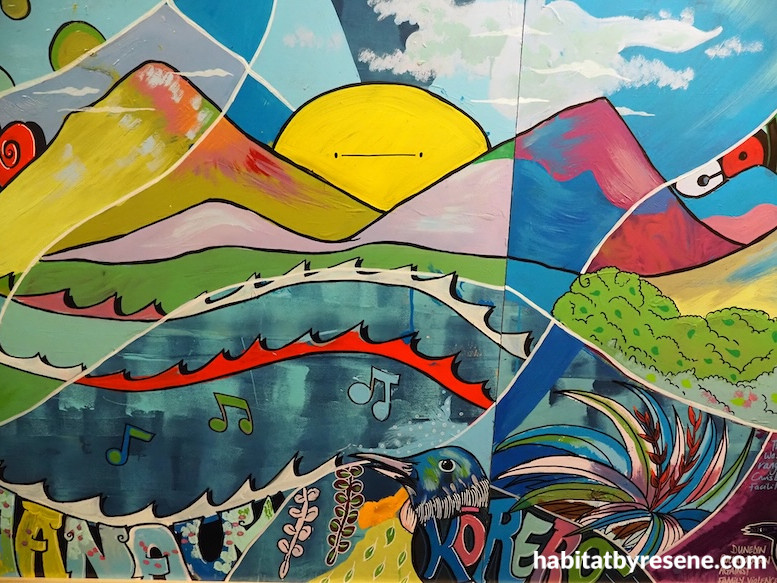
The gentle art of inner healing through creative arts therapy
15 May 2025
A recent article from the Daily Encourager discusses how creative arts therapy is a transformative approach that helps both children and adults struggling with trauma to express and understand their emotions through creativity and gentle exploration.
“It’s helping people go through those traumatic memories in a way that’s more gentle,” says Claire Rye, a Creative Arts Therapist based in Dunedin.
A large part of Claire's work focuses on young people aged 8 to 18, though she also works with adults through the Accident Compensation Corporation (ACC) Sensitive Claims Service.
The therapy spans across a variety of artistic mediums, including drama, music/sound and visual arts. Claire, who was once a ‘skateboard kid’ with a love for graffiti, now brings her passion for creativity to the therapeutic space, including painting vibrant murals that feature cheerful Resene hues.
As a clinical therapist with Stopping Violence Dunedin, Claire has worked with children who have turned to violence as a response to their trauma, guiding them through the healing process using the power of creativity. “Younger children don’t usually have cognitive understanding in the same way adults do, and creativity helps them express their feelings,” she says.
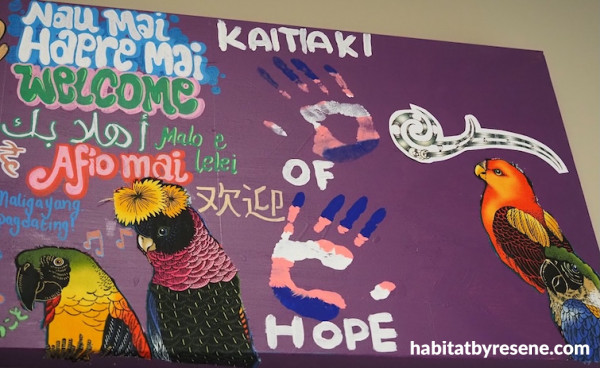
Children’s artwork from a healthy relationships workshop in Dunedin is painted using Resene testpots and paint donated by Resene.
Art as a tool for sensory regulation
In therapy, creative arts are often used for sensory regulation – helping neurodivergent children self-regulate through art. Claire believes that art therapy can help people process traumatic experiences in a safe, non-verbal way, providing a space for emotional healing. “Art therapy can help people gently process traumatic experiences and begin to feel safe again in their bodies and with their emotions.”
As people grow older, Claire explains, they can often express their emotions verbally, and art therapy serves as an additional tool for processing these emotions. “I use creativity, such as visual arts, journaling, using clay or movement to help process challenging situations or emotions,” Claire says.
While verbal expression is important, art allows people to tap into their emotions in a more tactile, sensory way. “It’s about the therapeutic journey,” she says, referring to a mural project she created with young people (below).
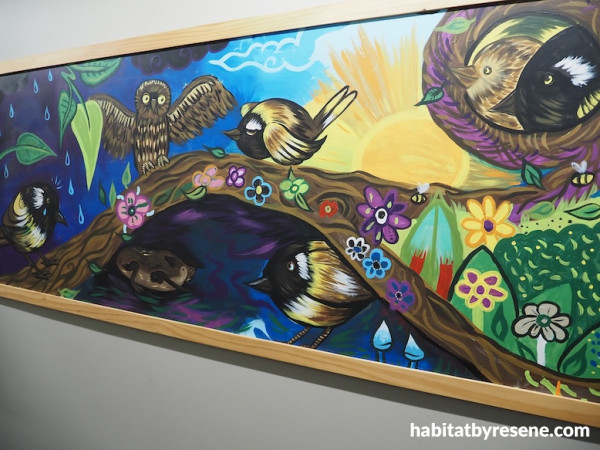
The mural Claire created alongside young people features birds and a bat taking wise advice, symbolising the power of art in creating a space for reflection and connection. This mural is painted with a wide array of Resene testpot colours and paint donated by Resene.
Exploring different methods of expression
One of the most unique aspects of Claire's work is the way she lets her clients choose their preferred therapeutic medium. “It’s letting people explore different methods of expression,” Claire says. She offers a variety of materials and asks her clients what they enjoy doing most, ensuring that the therapy is collaborative.
Her approach is hands-on but non-directive. "I don’t tell them what to do, and I don’t interpret their art," she says. "The client’s the expert in their own recovery, but I’m there to help them."
Through this process, Claire introduces methods to help regulate the body and mind, such as breathing exercises, tapping or trauma-informed yoga. Her goal is to create a safe, open environment where clients can express themselves freely, without judgment or pressure.
Creative arts as a lifeline for mental health
Creative arts therapy is not just about healing from trauma – it also has profound mental health benefits. Claire, who holds a Master’s in Creative Arts Therapy from Whitecliffe College, believes in the therapeutic power of art to reduce anxiety, manage depression and improve overall well-being.
“It’s great for reducing anxiety. I find it helpful for managing depression and reconnecting with myself again as a regular maintenance for my mental health,” she says.
For Claire, journaling is also an effective method of self-reflection. She also advocates for keeping things simple, especially in today’s fast-paced world. “Society is stressed right now, and people need more rest,” she adds.
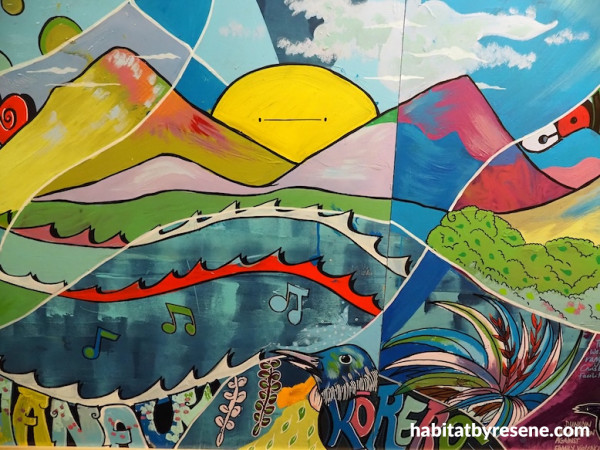
Children's creativity and emotions combine in this mural that Carisbrook and Portobello School students painted. The mural is displayed at Stopping Violence Dunedin and was painted with arange of Resene testpot colours.
A lifelong commitment to creative connection
Claire’s dedication to her work is clear: “It’s my life’s work,” she says. Her approach, blending her love for the arts with her extensive experience as a youth worker, has been a powerful tool for building rapport and helping people find emotional healing.
"Connecting with people through creativity is just a really nice way to help them,” Claire says, highlighting the profound impact that creative arts therapy has on both individuals and communities.
For more information, visit the Australian, New Zealand and Asian Creative Arts Therapies Association (ANZACATA).
Published: 15 May 2025





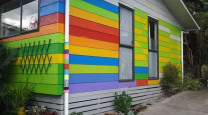








 look book
look book